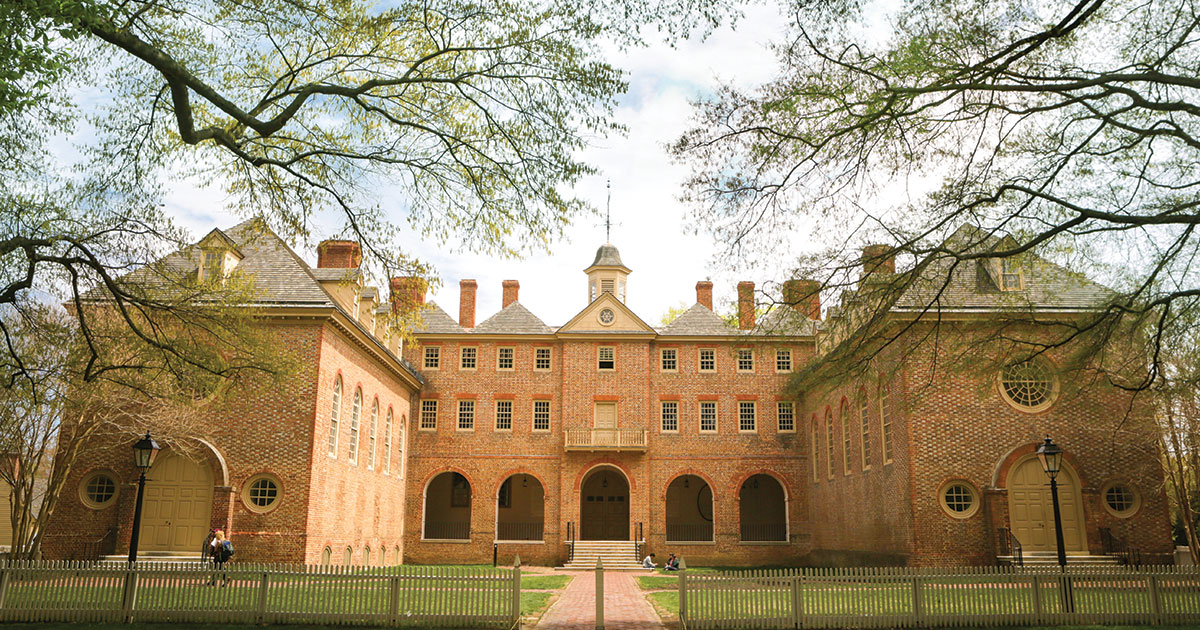Cabell Challenge seeks to provide budding scientists with top-notch equipment
Improved understanding of neurodegenerative diseases, advances in genomic research with expanded DNA analysis, and impactful global climate change research ? could all be achieved with cutting-edge equipment placed in the hands of William & Mary’s next generation of gifted young scientists.
Forty pieces of modern science equipment are sought to enrich the educational experience annually of more than 2,000 undergraduate science students. The new equipment, which will support research in molecular biology, neuroscience and environmental sciences, is an essential investment if the university is to continue conducting innovative research.
To help William & Mary acquire the equipment, the Cabell Foundation has generously pledged $500,000 to the Integrated Science Center’s Equipment Fund, but only if the university raises $1 million by Dec. 31, 2016. This effort, coined the Cabell Challenge, is part of William & Mary’s For the Bold campaign.
The equipment will be utilized mainly in the Integrated Science Center’s new 113,000-square-foot wing – ISC 3 – slated for completion this fall. Once ISC 3 is completed, the ISC complex will house 67 full-time faculty in some of William & Mary’s largest science departments (biology, chemistry, psychology and applied science) and interdisciplinary programs (neuroscience and environmental sciences) in one state-of-the-art facility designed to encourage collaboration.
“We are already strong,” said Eric Bradley, Planning Coordinator for Arts & Sciences, Chair of Biology and former Chair of Applied Science. “Fully equipping ISC 3 will allow us to be more nimble and enable us to grow in new and emerging areas of research.”
The National Science Foundation ranks William & Mary fourth among public universities in the U.S. in the percentage of undergraduates who go on to earn doctorates in the natural sciences.
According to Bradley, “compared to other universities, an extraordinary number of our undergraduates do graduate-level research and publish their findings in peer-reviewed science journals. Graduate schools recognize this as a mark of excellence.”
Supporting and Accelerating Interdisciplinary Research
Supporting and accelerating interdisciplinary research is one of the key objectives of ISC 3. Bradley explains that modern science draws on many disciplines to address society’s toughest health and environmental problems and to create new knowledge that can benefit our economy.
“The idea is to bring science disciplines closer together, so that collaborators can share techniques and ideas by just crossing a hallway,” Bradley said. “Facilitating collaboration has tremendous benefits for our students, who increasingly want to do research in interdisciplinary fields such as neuroscience and environmental studies. A fully equipped ISC 3 will enable them to study problems from multiple angles and levels, from molecular interactions to systems and populations.”
Bradley says that the new equipment will allow many more students to learn sophisticated techniques to better prepare them for research on the graduate level. The Applied Science Department’s move to ISC 3 will add new technologies (such as atomic force microscopy, nanotechnology, and robotics) to the array already available to students and faculty in the ISC.
Rapid advances in these and other technologies present challenges as well as opportunities. The university must continually update its lab equipment so that students can learn through authentic, hands-on research and thrive under the continuous mentoring provided by faculty – and students’ demand for that experience is growing.
For example, having access to the latest technology was a major factor in the success of William & Mary’s iGEM team of undergraduates whose project in synthetic biology won first place in an international competition in 2015 (beating Harvard, Oxford and 250 others). According to iGEM team advisor Professor Margaret Saha, “the iGEM team often worked after midnight in the ISC in order to use the confocal microscope, which was heavily used by other faculty and students.”
Modern Labs for Modern Science
ISC 3’s structure is designed to facilitate collaboration. Classrooms and research labs are intermingled with social spaces where undergrads, graduate students and faculty can enjoy a cup of coffee from the ISC 3 café while discussing a new idea for their cutting-edge research related to understanding Alzheimer’s, climate change or hundreds of other topics.
“It’s about efficiency,” Bradley said. “ISC 3 will create shared labs with advanced equipment that any qualified scientist or student can use.”
The state’s support for the new $78 million, four-story structure, located between Millington Hall and the Jamestown Residences, covers construction but provides minimal support for new equipment ? thus the importance of the Cabell Challenge. Equipment acquired through the Cabell Challenge will be used by more than 50 faculty and 2,000 students annually.
The ISC complex includes ISC 1, which opened in June 2008 and houses the chemistry department and part of the biology department. ISC 2, formerly Rogers Hall, reopened as ISC 2 in 2009 following a major renovation; it houses the psychology department and some biology faculty. ISC 3 will provide offices and labs for biology faculty moving from Millington, for the Applied Science Department moving from McGlothlin-Street, and some chemistry, psychology and geology research labs as well.
In addition to labs, classrooms and offices, ISC 3 includes a 300-seat lecture hall, replacing Millington Hall as the largest instructional auditorium on campus used by all departments. There will be a food service area with a coffee shop in the first-floor lobby. A new greenhouse for research and public display is being built on the roof of ISC 2. The College’s high-performance SciClone computer facility will move to ISC 3 from Jones Hall.
To accommodate the evolving needs of several science disciplines in one building, research labs in ISC 3 are modular in design and can be changed as need arises. The labs can be reconfigured due to a flexible infrastructure for providing electrical power, connections to high-powered computing and the Internet, water sources, and adaptable furnishings.
“Technology will change and we will have labs that can change with technology,” Bradley said.
The design of the ISC 3 is by Einhorn Yaffee and Prescott; general contractor is Whiting Turner Contracting.

